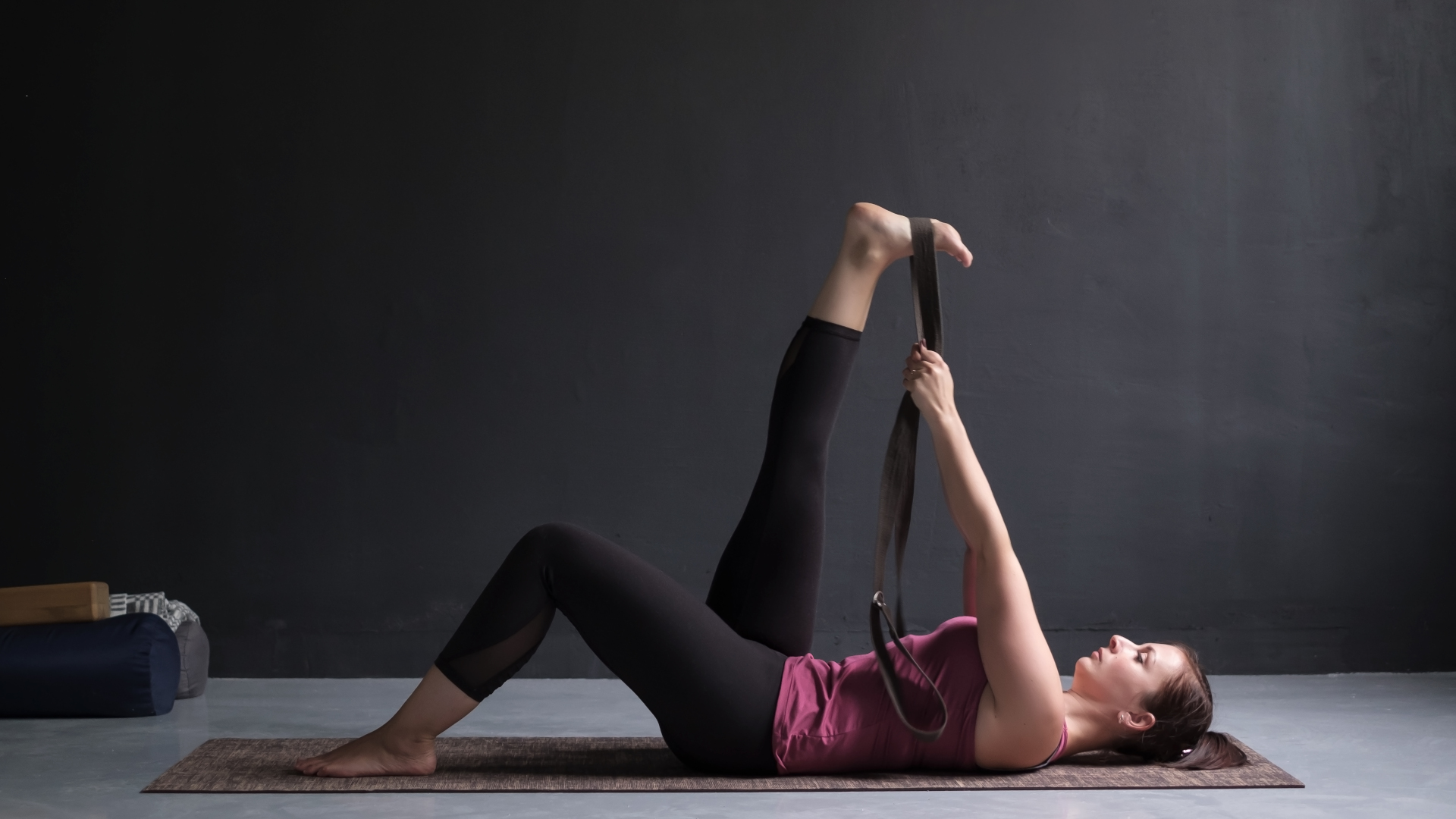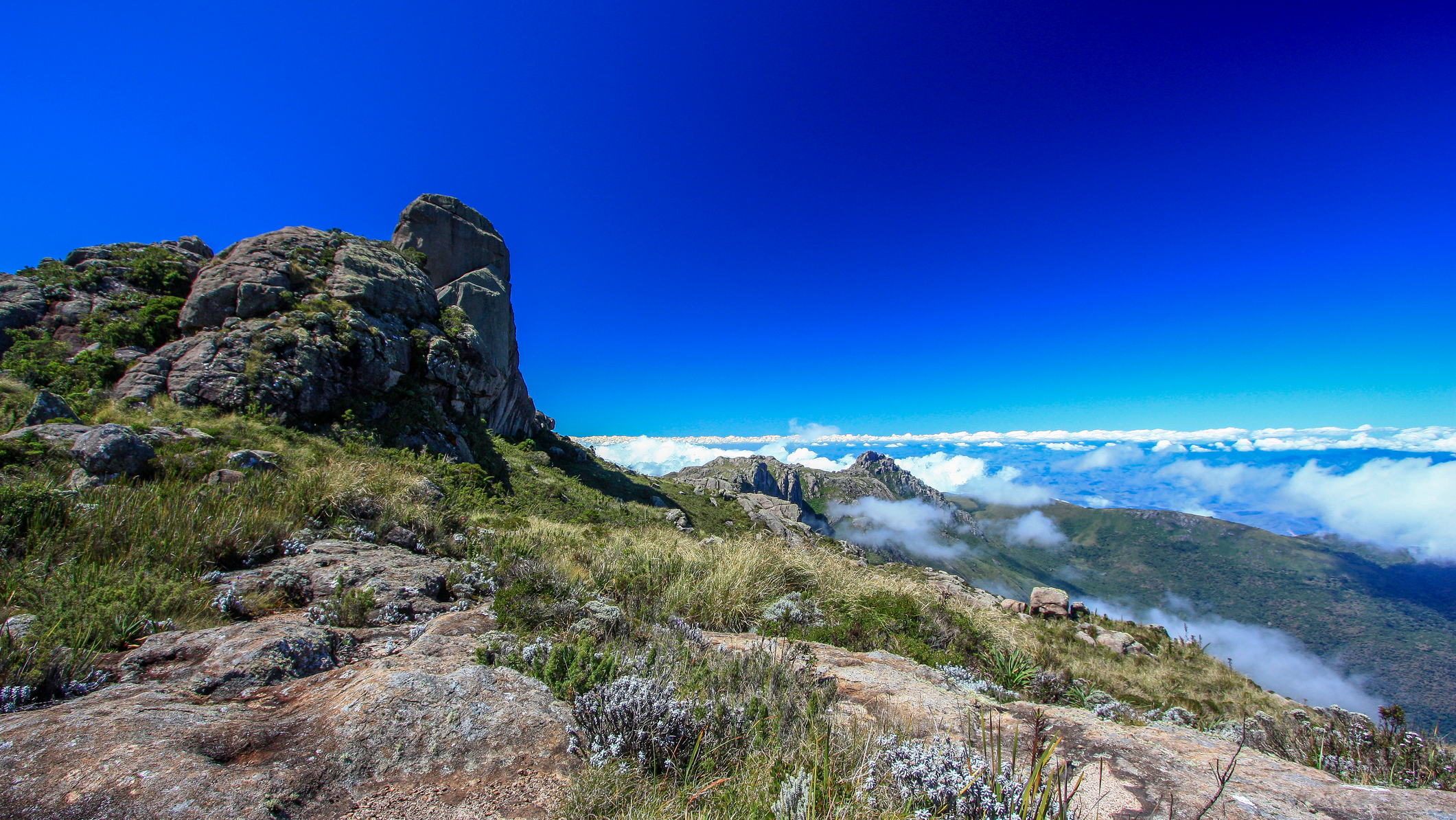Tight hamstrings from running and hiking? I’m a yoga teacher and this is the pose I recommend (plus how to it properly)
There’s no functional reason to do the splits, but this yoga pose can help keep you pain-free and moving fast

If like me, you love to lace up your trail running shoes or hiking boots and hit the trail regularly, you might find that your hamstrings are feeling a little tight these days – especially if you’re not great about stretching regularly.
Running and hiking place load your hamstrings – a collective term used for the three muscles that run down the back of your thigh from your sitting bones to the back of your knee – and that’s not a bad thing. Adding load to muscles helps make them stronger, and strong leg muscles assist with balance as well as your ability to perform everyday functions like standing. Until it doesn’t.
Overloading your hamstrings, whose job it is to bend your knee, doesn’t make the muscles shorter – it just feels that way. What it can do, however, is inhibit the ability of your hamstrings to move through their full range of motion – by nature, hiking and running move your knees and hips through a fairly short range of motion and when you do these movements on repeat, it can mean you feel pretty stiff when you go to put your shoes on in the morning.

Why does it matter if I have tight hamstrings?
I’ve been teaching yoga for 15 years, mostly to athletic populations, and unyielding hamstrings are something I see a lot of. You don’t need to have any aspirations to get your leg behind your head for tight hamstrings to be an issue – because your hamstrings originate at your pelvis, when they grow tight they can hold your pelvis in a posterior tilt, and that has knock-on effects. Research shows this can lead to postural issues, lower back pain and problems with balance.
Furthermore, your hamstrings share tissue with your calves, and tightness in one often signals tightness in the other, which can leave you prone to running injuries like Achilles tendonitis, strains and shin splints. But that’s all worst-case scenario.
In reality, some tightness in your leg muscles is a normal part of hiking and running, and it can actually help you if you’re a sprinter. It’s not an issue unless it’s causing you pain or affecting your ability to perform daily activities. That’s why doing some mobility exercises such as those provided by yoga can be helpful.
Half Splits for runners and hikers
You might not reasonably expect to be able to do the splits as a runner, nor is there any functional reason to do so, but one of my favorite poses to offset the tightness I feel in my own hamstrings after running and hiking is a pose called Half Splits.
Advnture Newsletter
All the latest inspiration, tips and guides to help you plan your next Advnture!
Much as it sounds, Half Splits is a variation on splits that’s much more accessible and can easily be incorporated into any stretching sequence, such as my yoga stretches for runners.
But there’s a caveat. Without a little guidance, it’s easy to do Half Splits in a way that basically does almost nothing for your hamstrings. Check out this picture of me doing Half Splits the way I usually see people doing it:

In this picture, you can see my back is rounded so I can bring my hands to the floor. But why does that matter? After all, I’m doing Half Splits to stretch my hamstrings, so why does it matter what my spine is doing? The answer lies in the origin and insertion points of my hamstrings.
Because these amazing muscles originate on my sitting bone and insert just below the back of my knee, if I round my back like this I’m further posteriorly tilting my pelvis. That actually means I’m moving the two ends of my hamstrings closer together. Not helpful when I’m trying to stretch them, right?
Read on for what to do instead.
How to do Half Splits properly
After you’ve been out on a run or hike, unroll your yoga mat for a few minutes of stretching. For Half Splits, you’ll want to step one foot back and bring your back knee down. If that hurts your knee, place a folded towel under it then do the following:
- Forget about bringing your hands to the floor. Grab two yoga blocks (large books will do if you’re stuck) and place one under each hand on the tallest setting.
- Straighten your front leg as much as you comfortably can. You may need to slide your heel forward a little to avoid sitting back on your heel.
- Move the blocks if you need to so that your hands can stay comfortably under your shoulders and lift your chest, lengthening your spine rather than folding over your leg.
- Make a small bend in your knee, then see if you can tilt your sitting bones back so you’re moving the origin of your hamstrings away from the insertion.
- If you can do so without strain, slowly begin to straighten your knee again without letting your sitting bone roll under.
- Dorsiflex your ankle to draw your toes towards you to also stretch your calves.
Now your Half Splits should look more like this:

At first, the muscle spindle stretch receptors (cells within the muscle that detect changes in tension and length) will start telling your nervous system to contract the muscle to avoid injury, but stay here for a few breaths and that firing will stop.
When it does, you can take things a step further by contracting your quadriceps to actively straighten your knee, then contract your hamstrings and press your heel into the ground. Hold this for a few breaths, essentially strengthening your hamstrings in a lengthened position, then release again and you’ll probably notice a difference straight away.
If Half Splits is not appropriate for you, grab a yoga strap or a belt instead, lie down on your back and stretch your hamstrings with this posture:

Julia Clarke is a staff writer for Advnture.com and the author of the book Restorative Yoga for Beginners. She loves to explore mountains on foot, bike, skis and belay and then recover on the the yoga mat. Julia graduated with a degree in journalism in 2004 and spent eight years working as a radio presenter in Kansas City, Vermont, Boston and New York City before discovering the joys of the Rocky Mountains. She then detoured west to Colorado and enjoyed 11 years teaching yoga in Vail before returning to her hometown of Glasgow, Scotland in 2020 to focus on family and writing.

